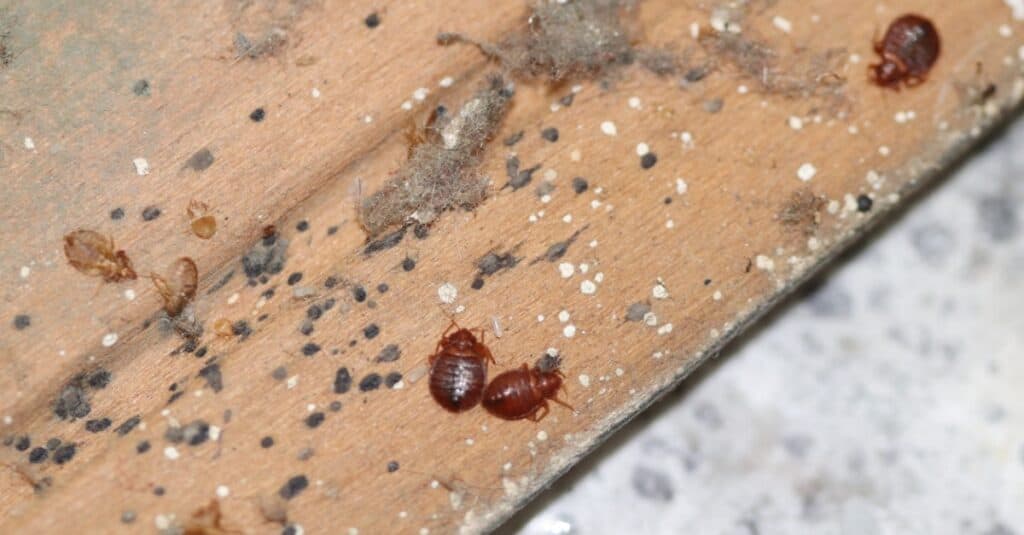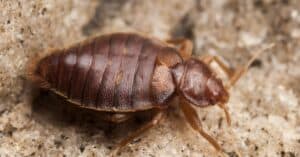Bed bugs are disgusting and frustrating pests to get rid of. If you have a current infestation, read more about how to remove bed bugs permanently. Once they travel to your home, the path to eliminate them can be treacherous, which is why so many people end up calling a local pest control service. Maybe you’ve seen some little pests on your mattress or in your pillow already. Perhaps you’ve already begun feeling the itchiness on your skin or in your hair. How do you know if everything you’re noticing points to a bed bug infestation or simply paranoia?
Bed bugs have become a common problem in many large cities, especially in hotels. Getting rid of them may involve discarding all your bedding and upholstered furniture along with costly extermination. It pays to know what to look for, particularly when traveling, so you can avoid bringing these extremely unwanted guests home with you.
Understanding a few facts about bed bugs can make a significant difference. In this guide, you’ll learn where they are found, how to identify them, and even if bed bugs can live in your hair. Most importantly, once you know these facts, you’ll also learn about the treatment you need.
Where Can You Find Them?
There are a few facts you need to know about bed bugs before you’re able to do anything, starting with where you should look. Since they can easily travel from one home to another, make sure to check your luggage and clothing thoroughly whenever you have gone to a hotel or even a friend’s home. Catching the problem before it starts is the best way to avoid problematic treatment.
If they manage to get into your home, they primarily hide in groups in mattresses, box springs, headboards, and bed frames. These are reliable sources of nourishment because it’s exactly where you lay at night. While sleeping, these bed bugs can climb on your skin to bite. In fact, if they are in your pillow, they’ll start sneaking onto your scalp to suck blood as well. They leave behind big red marks from their bites, even if you don’t see the bed bugs nearby.

©iStock.com/Matteo Lanciano
Identification of the Problem
Before you start any methods of eradicating bed bugs, you need to make sure that they are actually what has infested your home. The biggest sign that you have bed bugs is their location, as mentioned above. Once you get a better look at the bug, you’ll see a substantial difference between that and other insects. The adults are no bigger than an apple seed, though a fed bed bug often is red because of the blood it sucks out of the human host. If you have adults, make sure you look for the eggs, because females can lay hundreds of them in your pillow, in mattress seams, and many other places.
Another one of the telltale symptoms of a bed bug infestation is the bites that they leave behind. Bed bugs require blood to feed on, which they can get from biting humans and pets. Hiding within the hair is an easy way to remain unnoticed, especially since it conceals them from the light.
Along with what you can see, there’s also a certain odor to bed bugs. It is rather musty, and the aroma is released by scent glands on the bug. In order to properly identify bed bugs, we recommend the Harris bed bug traps. They come in a pack of 20, and allow you to easily capture bed bugs and examine them closely without a risk of further infestation.
- No chemical option to confirm bed bug presence
- Catches other bugs and pests as well
- Easy detection coverage for 2-3 rooms.
Can Bed Bugs Live in Your Hair?
Generally, bed bugs prefer a less warm climate, so they won’t keep living on your head. However, because of all of the prime spots to draw blood, bed bugs can commonly be found along the scalp around the hair. You won’t feel them crawling around because they don’t have the same claws as lice or ticks. However, the itchy sensation left behind is one of the earliest symptoms of bed bugs.
You most likely won’t see them during the daytime because they tend to be active at night. They only need about three minutes (at minimum) to feed and walk away. Still, identification of the bed bugs is crucial if you want to get rid of them.
Signs and Symptoms of Hair Infestation
One of the biggest indicators that you have bed bugs is the evidence they leave behind on your body, especially in your hair and on your scalp. If you aren’t sure, start with checking your sheets and pillowcases for bloodstains. These bugs feed on blood, which is why they cause so many red spots on your body. Considering how warm and dark the scalp is, it makes sense that they would sneak into your hair.
You may not even realize the pests in your hair at first because they don’t hurt right away. Instead, itchy welts become one of the main symptoms of a hair infestation, but it is often too late to prevent at that point. These bites are a clear sign that you probably have an infestation in your home. The only way to properly identify that you have bed bugs is to find the culprit of these bites.
After identification of an infestation, the treatment of a hair infestation requires exposure to extreme heat. Washing the hair with hot water and shampoo is helpful, especially if you deep massage. You’ll need to comb through your hair to make sure every dead bug and egg is carefully removed. To treat the itchiness, the best remedy is corticosteroid cream, which you may need to get from a doctor if the bites are severe enough.
Up Next
- Do Bed Bugs Fly? Just how athletic are bed bugs? Find out here.
- Bed Bugs Treatment: 7 Ways to Deal with a Bed Bug Infestation If you did bring these pests home, find out how to get rid of them here.
- The Different Types of Bed Bugs Know your bed bugs and what to watch for.
The photo featured at the top of this post is © iStock.com/John-Reynolds
Thank you for reading! Have some feedback for us? Contact the AZ Animals editorial team.








